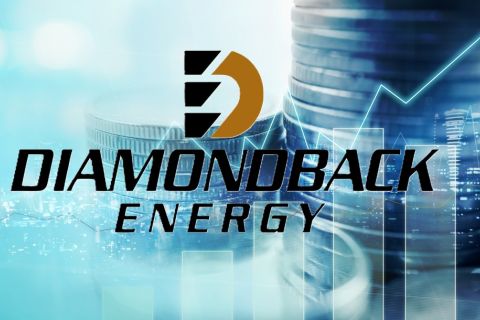Floating production analyst Energy Maritime Associates (EMA) recently completed an in-depth quarterly analysis of the sector, flagging up rising orders but also questioning the industry’s ability to meet the demand.
According to EMA, the industry inventory for FPS units has now reached 264, with FPSOs accounting for 60% of the existing systems. The balance is comprised of production semisubmersibles, Tension Leg Platforms, spars, production barges and floating regasification/storage units. Another 99 floating storage/offloading units (without production capability) are also in service.
With 13 production floaters and two FSOs so far ordered this year, that equates to more than US $16 billion in construction contracts in 2014 and reflects a strong order trend. They include three large converted FPSO units for Angola, three newbuild Production Barges for Indonesia, three floating regasification units, two units for the UK North Sea, and two FLNG (Floating LNG) units.
The pace of orders has recovered sharply from last year, says EMA, and is currently 25% above the 16-year average.
Brazil’s Petrobras is, of course, a major player in this market with 10 more units required, on top of the 14 it already plans to contract as part of its 2014-2018 business plan. Needed to develop the additional resources in the Transfer of Rights Area offshore Brazil, the state-owned major has made it clear it requires at least 10 more floating production units, with two planned to start operations in 2021, with an additional eight to be installed between 2022 and 2025. This is on top of the 14 units still to be contracted as per the existing business plan.
In the emerging FLNG market, EMA pointed out that two large LNG projects recently encountered setbacks, with Australia’s Bonaparte development deciding not to proceed with an FLNG FEED and Woodside terminating a Memorandum of Understanding to invest in Israel’s ultra-deepwater Leviathan gas project.
The issue for these mega-FLNG projects seems to be an insufficient risk/reward balance in the eyes of the oil companies, says the analyst. However, soon after these announcements, Golar LNG confirmed it was placing a $735 million order with Keppel shipyard to convert a 1975-built LNG carrier into a 2.2-2.8 mtpa FLNG unit on speculation. Golar raised $683.1 million in equity to fund the project, which is expected to cost an estimated $1.2 billion.
Golar is targeting a less complex type of FLNG project than Bonaparte and Leviathan, continues EMA, and is in discussions for requirements in Africa and North America.
Having a mostly positive impact for the floating production market are the lower drilling costs currently being experienced. Deepwater drilling rates have decreased, as seen by Transocean signing a sixth-generation drillship on a three-year contract at $440,000/d. Many are expecting rates for ultra-deep rigs in Brazil to be in the $450,000 - $500,000/d range, which is up to 30% lower than current rates.
While this is negative for drillers, it decreases field development costs and increases the likelihood of economically viable production projects. A similar situation could be on the horizon in the jackup market, with a third of the working jackup fleet entering the market over the next few years. However, if drilling rates were to decline to the point where a large number of rigs are stacked, then this would be negative for the production market by delaying and decreasing the projects in the planning pipeline.
The question EMA poses in its report is whether the industry can deliver what’s required. There are currently 65 production floaters, 8 FSOs and 4 MOPUs on order, which is a 5% increase from the last quarter and reverses a steady decline that began in the first quarter of 2013.
This increase in the order backlog is due not only to new awards but also to delays in delivery. Three projects that had been scheduled to start production in the UK or Norwegian North Sea this year have required additional time primarily during commissioning. The eight serial FPSOs ordered by Petrobras in 2010 are now scheduled to be delivered in the 2016-2018 period.
According to EMA’s managing director David Boggs: “The fundamentals are solid for the floating production market with high, stable commodity prices, declining drilling rates, and open financial markets. The question is whether the industry can meet this demand and deliver these increasingly complex projects, on-time and on-budget. To overcome supply-chain constraints, companies must continue to adapt and be creative, such as by building mega hull blocks in China to be assembled in Brazil, or converting an old LNG carrier into an FLNG unit.”
Recommended Reading
E&P Earnings Season Proves Up Stronger Efficiencies, Profits
2024-04-04 - The 2024 outlook for E&Ps largely surprises to the upside with conservative budgets and steady volumes.
CEO: Coterra ‘Deeply Curious’ on M&A Amid E&P Consolidation Wave
2024-02-26 - Coterra Energy has yet to get in on the large-scale M&A wave sweeping across the Lower 48—but CEO Tom Jorden said Coterra is keeping an eye on acquisition opportunities.
Endeavor Integration Brings Capital Efficiency, Durability to Diamondback
2024-02-22 - The combined Diamondback-Endeavor deal is expected to realize $3 billion in synergies and have 12 years of sub-$40/bbl breakeven inventory.
Patterson-UTI Braces for Activity ‘Pause’ After E&P Consolidations
2024-02-19 - Patterson-UTI saw net income rebound from 2022 and CEO Andy Hendricks says the company is well positioned following a wave of E&P consolidations that may slow activity.
CEO: Magnolia Hunting Giddings Bolt-ons that ‘Pack a Punch’ in ‘24
2024-02-16 - Magnolia Oil & Gas plans to boost production volumes in the single digits this year, with the majority of the growth coming from the Giddings Field.





